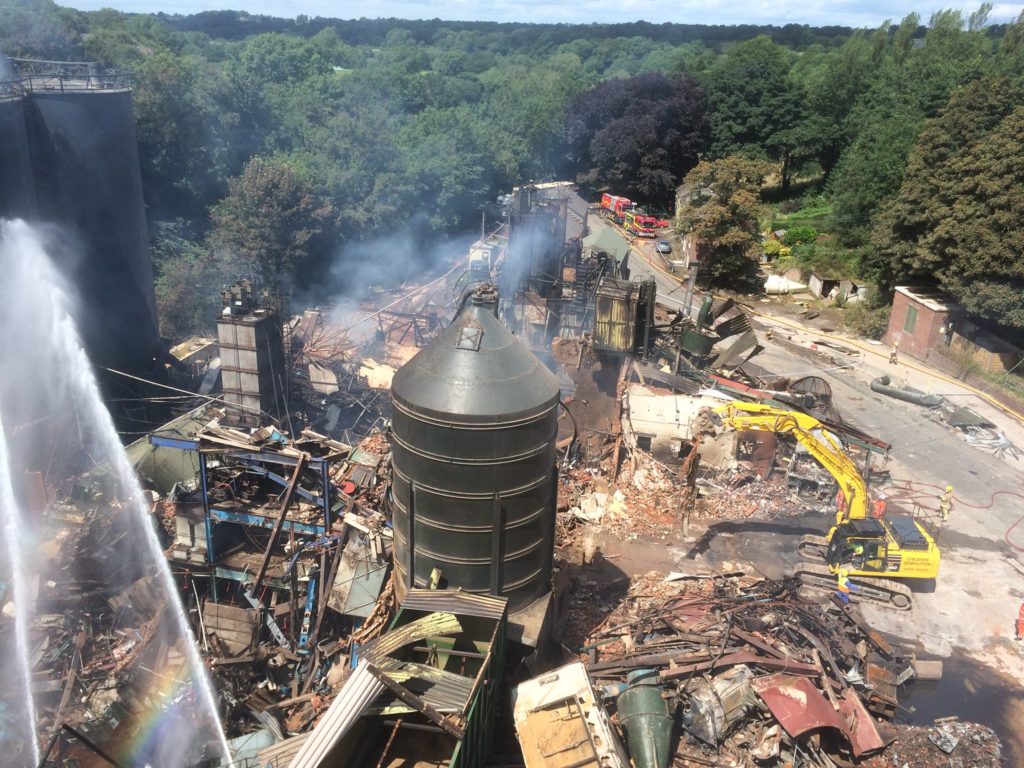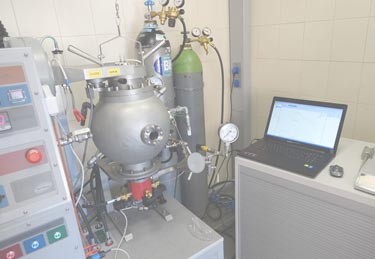Search
Wood, Glorious Wood; explosion with fatalities!

Everybody loves wood. It’s renewable, recyclable, and natural. Timber is one of the few truly natural, renewable building materials. It’s carbon positive and naturally insulating thermally and to sound. It’s lovely to work with and improves the mind, body, and soul when you live with it. So, what’s not to like?
About a quarter of all dust explosion globally involve wood dust [1]. Does that mean we should keep clear of wood, forgoing all its natural advantages? Certainly not. But it does mean that you must treat this most natural of materials with respect; understand the dust explosion risk and take appropriate measures to ensure the risks are controlled. Stonehouse process safety consultants and National Fire Protection Association (NFPA) 664 (next article) can help you do this.
The incident
A little after 9:00am on July 17, 2015, a loud explosion was heard in the vicinity of a wood flour mill in Bosley, northern England, UK. The fire service was called to attend ‘an explosion’ at a wood mill. Two further blasts were to follow. What first responders encountered was dazed people and a fully developed fire surrounding a collapsed, 4 story, wood mill building. The incident warranted the call out of 23 firefighting appliances in addition to control unit, heavy rescue, and environment protection support. In total, 35 people were affected by the explosions and fire, of which 4 sadly died.
Wood Mill Processes
Wood mills invariably produce wood dust/ wood flour. They are often engaged in the production of wood fiber, wood powder products/ fiber boards and more. Their processes usually begin with wood chips and shavings which are refined and conveyed pneumatically and via belts and hoppers, and into spreader units, before forming boards. Generally, there are also sawing and milling processes associated with the boards thus produced, and the consequential dust generated has to be collected, and usually recycled back into the production line.
Wood dust is combustible and, depending on its particle size and moisture content, can form a dust cloud if dispersed. Dispersed wood dust clouds can explode if they encounter a source of ignition with sufficient energy content. Stonehouse laboratories often undertake measurement of Minimum Explosion Concentration (MEC), Minimum Ignition Energy (MIE), Explosion severity (Kst, Pmax) and other parameters to advise our clients on the risks they run from wood dust explosion, and to ensure proper explosion prevention, protection, and isolation measures are taken to enable safe operation.
What Happened in Bosely?
Investigations into the Bosely incident were conducted by the police and the UK’s Health and Safety Authorities to establish what happened at the wood mill on the day of the explosion. There were 4 possible cause scenarios put forward to explain the apparent “cause” of the incident [1, 3]:
- A primary dust explosion occurred within the process, stirring up previously settled dust within the mill, leading to a large secondary dust explosion.
- A failure of a piece of equipment or pipe releasing a dust cloud within the mill that found an ignition source and exploded. Dust was raised and ignited causing a second explosion.
- A piece of equipment failed and released dust that ignited, the explosion stirring up dust and raising and ignite a secondary dust cloud.
- The high-voltage switchgear within the mill experienced an explosive failure, stirring up dust leading to a secondary dust explosion.
In fact, the ‘causes’ 1 through 4 above were perhaps consequences of more fundamental process safety failures that had gone on for some years at the mill. For example, the investigation uncovered a catalogue of health and safety issues:
- Excessive accumulation of dust in the workspace.
- Dust ‘layers’ from cm to 10’s of cm deep in places, were reported. It was suggested that this was caused by excessive dust release from process machinery coupled with an inadequacy of cleaning regime.
- Failure of dust containment of dust within process equipment, partly because of inadequate maintenance of equipment.
- Failure to act on warning from suitably qualified persons.
- Reluctance to employ approved contractors for specialist maintenance.
- The efficacy of the cleaning regime was deemed inadequate:
- Lack of investment in housekeeping,
- No SOP for site cleaning,
- Confusion over cleaning roles,
- Lack of leadership,
- Potentially multiple sources of ignition were available in the plant:
- Valves, electrical equipment, smoldering dust material
- Improper use/ servicing of ‘spark detection equipment’
- Poor design of plant regarding the prevention of transmission of fire and explosion between one part of plant and the next.
Consequences
Loss of life and serious injury are perhaps the most serious consequences of any fatal dust explosion. Secondarily there is loss of livelihoods for staff and dependents, and the effects on community that can be long lasting after this type of incident.
The incident was important in the UK for another reason too. Of particular interest was that the investigations ultimately resulted in court action in which it was not only the company that was brough to court (charged with corporate manslaughter), but a company director and 2 mill managers were also personally charged under Health and Safety legislation. Pleas of guilty to Health & Safety offences were submitted, and fines were issued along with a suspended prison sentence.
Prevention
It is pretty clear that the best way to avoid unwanted outcomes and consequences of dust fires and explosions is to take measures that prevent them happening in the first place – and additionally to ensure plant is designed to protect people, the business, and the community in the event that a fire/ explosion event does, even so, happen. In the USA there is valuable guidance available to industry through NFPA 652 to help achieve this, and those familiar with Process Safety Dispatch will be familiar with some of this and other relevant standards. But because of its inherent dangers and unfortunate history of explosions, the wood processing industries have their own dedicated NFPA standard – NFPA 664: Standard for the Prevention of Fires and Explosions in Wood Processing and Woodworking Facilities. This standard is highlighted in our companion article in this issue of Process Safety Dispatch. You may also wish to call Stonehouse for advice about how we can help you address dust explosion risk at your facility that handles combustible dusts and powders.
References
- Dust Safety Science – dustsafetyscince.com
- Cheshire Fire & Rescue Service – cheshirefire.gov
- Wood Treatment Ltd & Anor, R V – England and Wales court of appeal papers dated 28 April, 2021

Get in touch
To learn more about our expertise and services in dust explosion prevention & mitigation, call us at +1 609 455 0001 or email us at [email protected] today.
We also offer tailored virtual and in-company process safety training programs on Dust Explosions, Static Electricity and HAC (Hazardous Area Classification) and more. Find further information here.








